Roman Empire
| Roman Empire | Browse Topics | Alphabetical index | Site Map | Site News | Links |
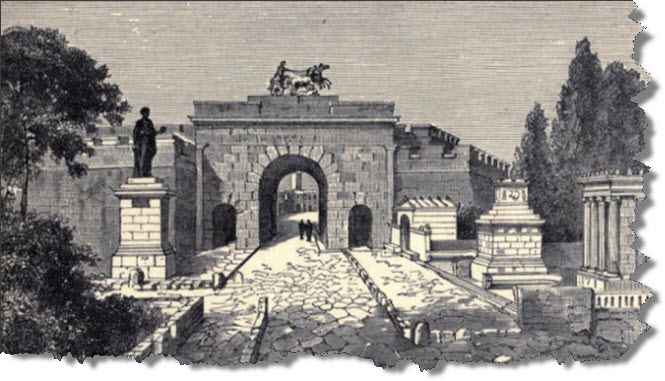 |
|||||
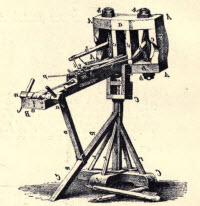
A Roman Ballista
This site provides information about the history of the The Roman Empire from the foundation of Rome until its fall. It also features informative articles about Roman institutions such as the senate, the legal system and how they have shaped today's society. There are also biographies of the most important Roman Emperors ranging from the great military and civil administrators to the crazy Emperors of the decadent late The Roman Empire.
Here you will find a concise history of the Eternal Rome, the great city that gave birth to the The Roman Empire, and left a permanent mark on the languages, histories and cultures of all the countries of Europe, as well as many parts of the world.
Below we trace the development of Rome from a small and insignificant city state surrounded by more powerful neighbours, to being the master of the known world for many centuries.
Articles About the The Roman Empire
- The City of Rome
- RomanPast.com -- Early History of Rome
- RomanPast.com - The History of the The Roman Empire
- The Growth of Rome - The Beginnings of the The Roman Empire
- Latin, the language of the The Roman Empire
- The The Roman Empire
- Roman literature
- Romulus
The two dates that mark the beginning and end of the Roman Empire, as often happens in the definitions of historical periods, are purely arbitrary because there was never a formal end of the Roman republic, whose institutions were never abolished, and also because even after the deposition of the last Roman Emperor in the west (476 a.d), the eastern half of the Empire carried on for over 1000 years, with its capital at Constantinople.
For many - as it did for many ancient Romans - 49 BC and the dictatorship by Julius Caesar may mark the end of the republic and the beginning of a new form of government (both the name and title of caesar became synonymous with emperor), but it is also true that Rome's empire had already existed for some time before Caesar assuming power, and dates to Rome's conquest of portions of Italy and southern Gaul, which had led to the Republic acting as an imperial power.
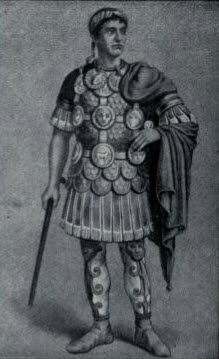
Roman Centurion
However 31 BC, when the Roman fleet commanded by General Agrippa defeated the Egyptian led by Mark Antony and Cleopatra at Actium, in Greece, marking the end of the second triumvirate and the final defeat of the only true opponent of Octavian for dominance in Rome represents the beginning of the actual power of Augustus, and the beginning of the Empire. In a short time, Octavian became master of the State and in 27 BC he inaugurated the final form of his rule and ruled without holding any office, with the titles of primus inter pares (first among equals), pater patriae (father of the nations), and especially Augustus an honorific title conferred by the Senate that year, indicating the sacred character of his person.
While Augustus is often regarded as the first Roman Emperor, Vespasian was the first Roman leader to assume the title imperator (emperor) in the sense we understand it: namely the supreme leader of the empire. Prior to that time, the title imperator was given to the commander in chief of the army, which could be any general appointed by the senate.
What makes difficult to mark the exact beginning of the Empire is that the Republic was never formally abolished. In fact its institutions, stripped of real power, endured throughout the era of Imperial Rome. The Emperors gave varying degrees of respect to the institutions of the Republic: Octavian, formally respected the republican institutions, holding various positions over the years that nevertheless led him to gain more power than any other Roman leader before him. The emperors Caligula and Nero, were brutes who had little respect for law or traditions and so treated the Senate and other Republican institutions with contempt.
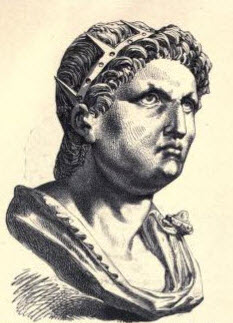
Emperor Nero
The Roman Empire reached the height of its power under the principalities of Trajan, Hadrian, Antoninus Pius and Marcus Aurelius. On the death of the Emperor Aurelius, power passed to his son Commodus, who brought the empire to a more autocratic and theocratic form of government. The power of traditional institutions was weakened and the phenomenon continued with his successors, who increasingly needed the military to govern. The role of the Senate in later centuries was reduced gradually until it becomes merely symbolic. The increased dependence of the emperor on the power of army brought in resulted in a time of crisis and military policy (about 325 a.d), described by historians as a military anarchy.
After half a century of instability, the Illyrian general Gaius Aurelius Valerius Diocletian came to power who reorganized the imperial power by establishing the tetrarchy, or a subdivision of the empire into four parts, two assigned to the Augusti (Maximian and Diocletian himself) and two entrusted to the Caesars (Constantius and Galerius), who were also the designated successor. The system, however, did not hold, and when Diocletian retired to private life new struggles for power broke out, from which Constantine, the son of Constantius, emerged victorious.
After Constantine's death the struggle for power resumed and territories of the empire were often divided, even for administrative nature and defensive purposes, between different emperors and co-rulers. The last emperor of the a united Roman empire was Theodosius I. Theodosius, with the Edict of Thessalonica (and subsequent decrees) forbade all pagan worship, thus transforming the empire into a Christian state. Theodosius appointed as his heirs with equal dignity, his two sons Arcadius (to rule in the East) and Honorius (to rule in the West). At his death in 395, the empire was divided into two parts, never to be reunited, but to people living the Roman Empire, this likely did not seem an epochal event since they were still part of one world, one Roman, even if administered separately, as had already happened several times in the past.
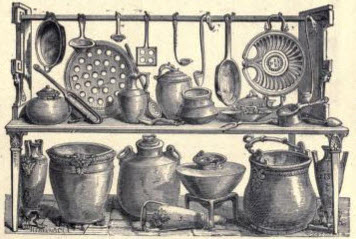
Daily Life of Romans: Bronze Pots and Pans
The western part of the empire was weakened economically, politically, militarily, socially and demographically by the continuing struggles of previous centuries and the pressure of barbarians on the frontiers. The western Roman Empire soon fell into a state of irreversible decay and from the first decades of the fifth century, the Emperors of the West saw their influence throughout northern Europe (Gaul, Britain, Germany) and in Spain disappear, while the Huns, in the same year, settled in Pannonia.
The end of the Roman Empire was also ambiguous, and nearly as difficult to determine as its end. The reason for this ambiguity is that even though the western Empire was conquered by barbarians, they for the most part perpetuated many Roman instututions and often had pretentions of calling themselves Emperors of Rome.
According to conventtion the western Roman Empire came to an end in 476 with the deposition of Romulus Augustus by Odoacer, a mercenary general origins of Germanic origins. Romulus had been enthroned only the year before by his father, General Flavius Orestes. Another current historiography, however, the formal end of the West occurred in 480, when Julius Nepos, the last legitimate emperor, who reigned only formally was assassinated by Odacer.

Roman Forum - the Center of Rome and the Roman Empire
The end of the western Roman empire ended the Roman unity and a unified Roman culture and nation spanning the Mediterranean basin (the so called mare nostrum, our sea) and deprived the surviving Romans, scattered throughout the west and in the easten half of the empire, of their homeland.
The loss of Rome is a very important event that marked the final sunset of a world. The eastern part, which modern historians call the Byzantine Empire, but which the Byzantines themselves stille called the Roman Empire, continued to exist until the fall of Constantinople (1453) and of the last bastions of the Mistra (1460) and Trebizond (1461).
The Roman Empire was not the largest empire that the world has ever known; that honour goes to the Mongol Empire. However Rome is is considered the greatest in terms of management and territorial quality, organization and socio-political importance for the mark left in the history of humanity. In all the territories over which the Empire ruled, the Romans built towns, roads, bridges, aqueducts, fortifications, exporting their model of civilization everywhere at the same time assimilating the subject peoples and civilizations, in a process so deep that even after centuries the end of the Empire these people continued to call themselves Roman. The civilization founded on the banks of the Tiber, is the basis for Western civilization.
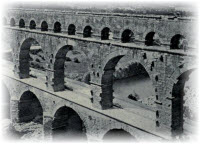
Roman Aqueducts made possible the growth of Roman cities and permitted the development of a large urban civilization.
| Privacy Policy | Site News | About | Site Map |